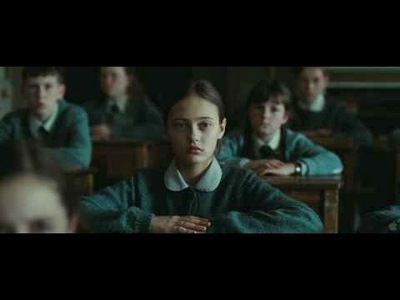From The Afterword Reading Society
Nine months before it was published, Alex Garland read the manuscript of Kazuo Ishiguro’s new novel, Never Let Me Go. It took him less than a day to finish, and later that evening called up his friend with a request: he wanted to write the screenplay. “I basically made a pitch: I said, ‘I know how we can make this,’ †says Garland, sitting in a room at the Park Hyatt during the recent Toronto International Film Festival. “I said, ‘You’ll probably get some other offers, and they’ll make a different kind of film, [but] this is the kind of film that we’ll make. Trust us.’ And he did.â€
It took more than five years of effort, but Never Let Me Go opens in theatres Friday. Directed by Mark Romanek, Never Let Me Go is a thoughtful adaptation of a novel Time called the best book of the decade. Starring Carey Mulligan, Keira Knightley and future Spider-Man Andrew Garfield, the film concerns a group of students at Hailsham, a secluded boarding school in the English countryside. The students have a special purpose in life: They are clones, and their organs will be harvested by the time they are middle-aged. This is not a twist, but rather a device used to push the novel’s themes to the forefront. If you leave the theatre focusing on the (understated) sci-fi elements, says Ishiguro, you’ve missed the point.
“I don’t want [viewers] to go away thinking about things like clones, and genetic engineering, and organ donation. I want them to go away thinking about mortality — not just mortality and the fact that we have only a short time — I want them to go away thinking about what do you do with things like love and friendship, given that we’re not here forever?†says the novelist. “What are the really important things when you know you’ve only got a limited amount of time left, that’s essentially what the film is about.â€
Ishiguro, whose Booker Prize-winning novel The Remains of the Day was made into a film in 1993, has written four screenplays — including The Saddest Music in the World for Winnipeg’s Guy Maddin, with whom he will soon collaborate with again — yet he says he had no desire to write the script novel himself. He made a rule, years ago, never to adapt his own work. “It’s like having to go back to school and taking your exams again,†he says. “Once you feel the material is behind you, I think it’s really hard to go back into that place again.â€Â Instead, he left the job to Garland, whose screenplays include 28 Days Later and Sunshine, whom he’s known since shortly after Garland’s first novel, The Beach, was published in 1996: “I watched him go from being this star young novelist to this screenwriter who’s getting hotter and hotter in Hollywood,†Ishiguro says “It felt like he was absolutely the natural person to do it … I was very confident about Alex’s abilities as a screenwriter.â€
While Garland was keen to adapt Ishiguro’s novel, he knew there were risks — including their friendship. “I feel responsible to [Kazuo] as a friend, not just as a colleague,†he says. But “overall, I think it made it easier. It was not a difficult writing project, from my point of view. There’s such a big difference between starting with a blank page with nothing on it and starting with a blank page but an open book beside you that essentially has the answers to the questions you’re about to pose. It’s more than a map.â€
All involved say there was never any talk about playing up the “twist,†or any pressure to temper the bleakness of the novel with a happy ending. Says Mark Romanek, the film’s director: “I wept at the end of the book, and I felt [we] would have failed if people weren’t weeping at the end of the film.â€


